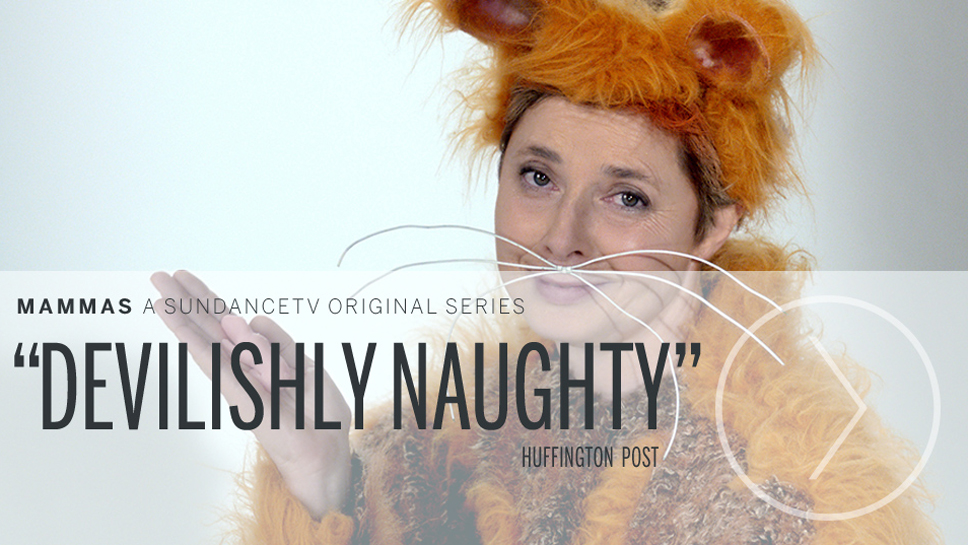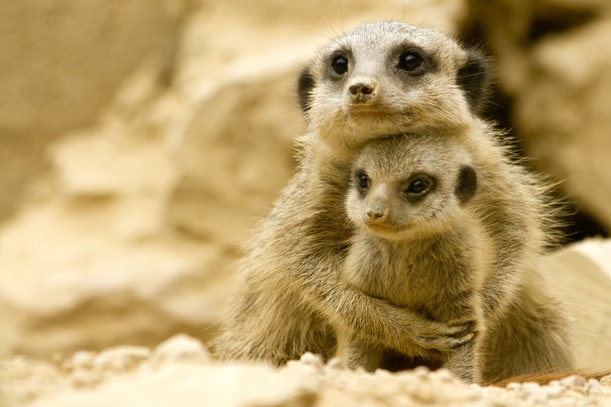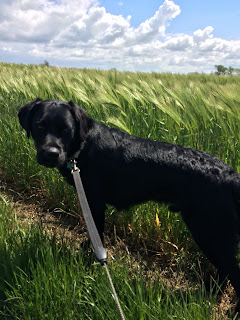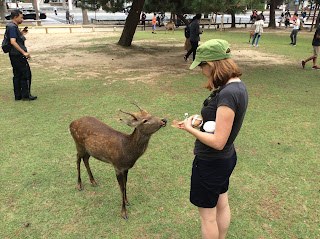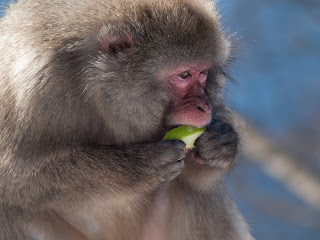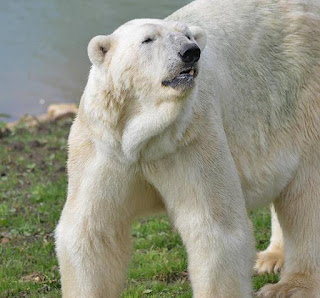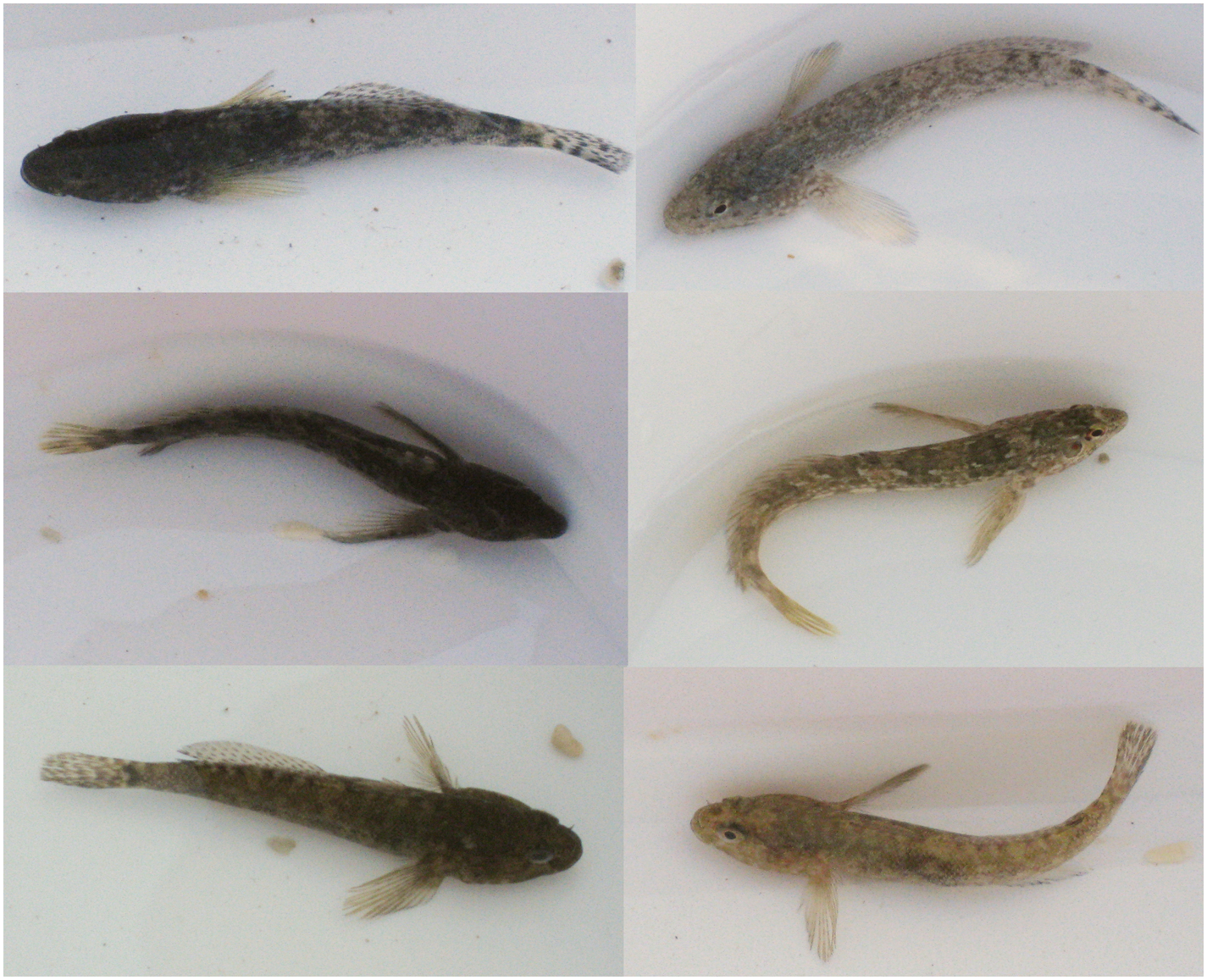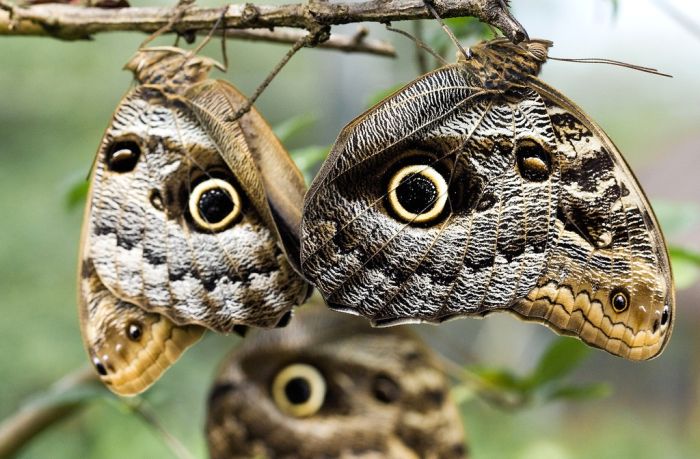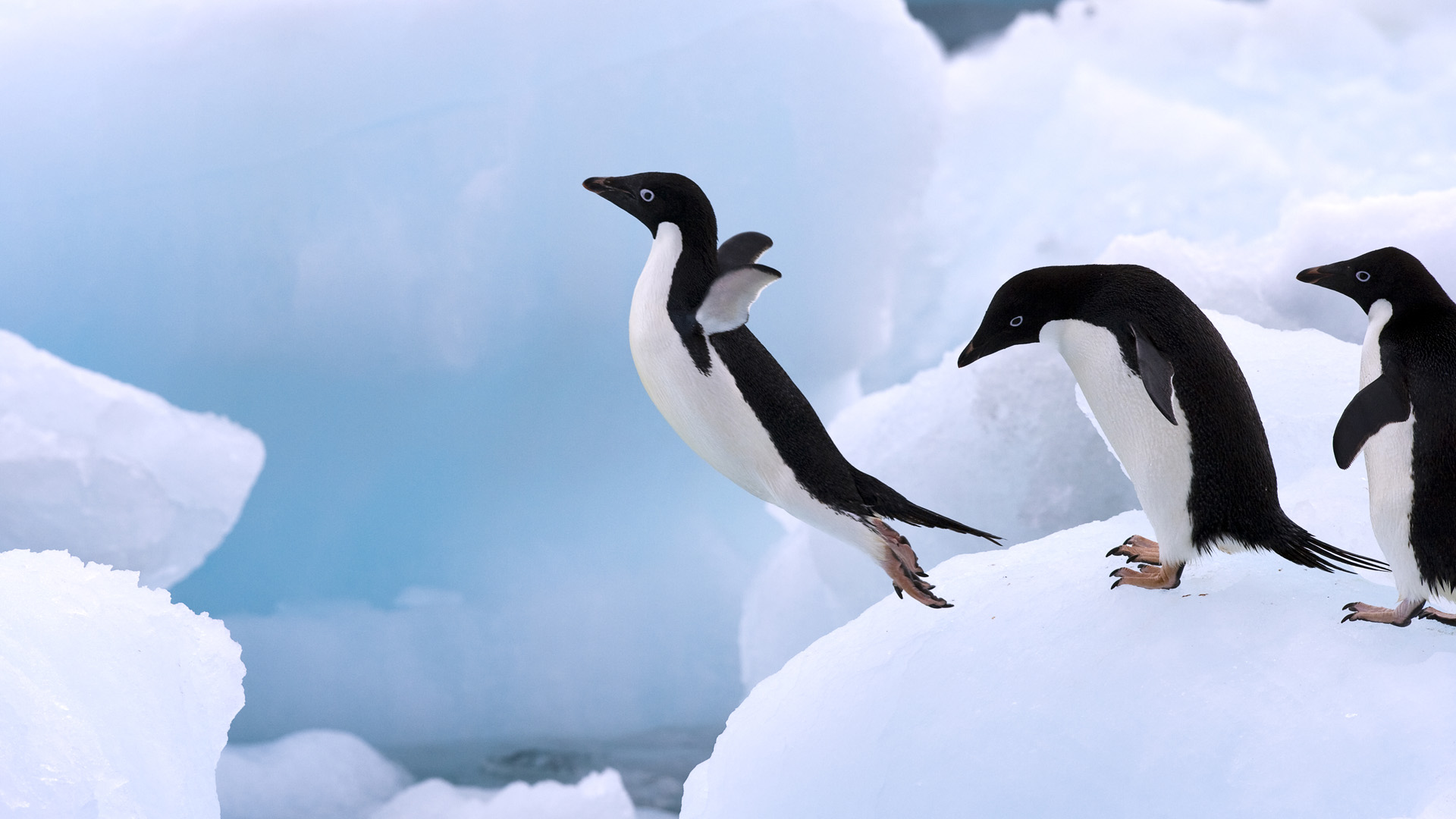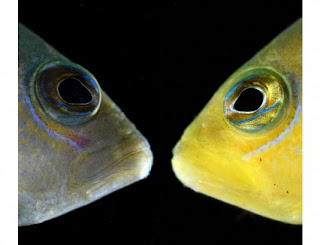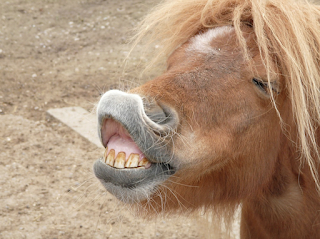
The Behavioural Ecology and Evolution Podcast (the Beepcast) (unknown_author)
Explorez tous les épisodes de The Behavioural Ecology and Evolution Podcast (the Beepcast)
| Date | Titre | Durée | |
|---|---|---|---|
| 10 Oct 2014 | Sept 2014: Leigh Simmons, stickleback personality, and caterpillars with hats | ||
Dieter Hochuli from the University of Sydney, tells me what life’s like for a caterpillar, and how one has evolved a cool mechanism to avoid being attacked. I find out how personality might influence your decision making, if you’re a stickleback. And in the scientific spark, I talk to Leigh Simmons who is managing editor of the scientific journal Behavioral Ecology, and Professor at, and Director of, the Centre for Evolutionary Biology at the University of Western Australia, about his inspiration to become a scientist. 
The gum leaf skeletoniser caterpillar is very fashion-forward with its approach to headgear. Photo: Nuytsia@tas Quicklinks:
| |||
| 21 Mar 2014 | March 2014: Temple Grandin, autism, weaver birds, and tadpole social learning | ||
The social lives of animals is this month's theme. I talk to Damien Farine from the Edward Grey Institute at Oxford University, who tells me how weaver birds decide how many house mates they want to live with. I discover how being hungry can affect how information spreads through a group of tadpoles. And in the scientific spark Temple Grandin, Professor of Animal Science at Colorado State University, a best-selling author, an autistism activist, a consultant to the livestock industry on animal behavior, and designer of the "hug box", a device to calm those with autism, tells me what inspired her to be a scientist.
Download the MP3 Quicklinks: Damien Farine's webpage Damien's paper on weavers Tadpole social learning, in Animal behaviour Temple Grandin's webpage | |||
| 08 Aug 2014 | July 2014: Isabella Rossellini and mammas, spider mimicry, and secret communication in horses | ||
This month over 1000 scientists flocked to New York’s Hunter College to attend the meeting of the International Society for Behavioural Ecology or ISBE. In the coming months I will be featuring interviews from researchers who attended the meeting, and this month, my first interviewee is Tom White from Macquarie university in Australia, who told me about spider he studies that is very good at attracting bees and flies. I also find out about a secret communication channel in horses, and in the Scientific Spark, I met actress and model and new student of animal behaviour, Isabella Rossellini, and asked her how she made the leap from the big screen to studying the science of behaviour.
Download the MP3 Quicklinks: Tom White's twitter page Tom White's webpage Current Biology paper on horse communication webpage Isabella Rossellini's mammas | |||
| 02 Apr 2015 | March 2015: Shaun Killen, animal personality, and guppy food preferences | ||
This month, I discover that a preference for a particular colour of food can be heritable, and I also have a chat with Niels Dingemanse from the Max Planck Institute for Ornithology about how you test animal personality. In the Scientific spark, I talk to Shaun Killen, from the University of Glasgow, who tells me about his inspiration to become a scientist.
Download the MP3
Testing Great tit personality. Image from http://www.mpg.de/617557/pressRelease20100209
Quicklinks: Great tits: birds with character Artificial selection for food colour preferences Shaun Killen's webpage Naturally speaking podcast | |||
| 10 Mar 2015 | Jan 2015: Niels Dingemanse, animal arithmetic, and smooth billed ani alarm calls | ||
This month, animal arithmetic from a research group in Italy who investigated how chickens order numbers – I put Naked Scientist Graihagh Jackson through her paces. Also in the episode, Leanne Grieves from McMaster University tells me what Smooth-billed anis do in response to different types of predators. And Niels Dingemanse, from the Max Planck Institute for Ornithology tells me about his Scientific Spark.
Download the MP3 Credit: Rosa Rugani, University of Padova Quicklinks: Leanne Grieves' paper on Ani in Animal Behaviour Number-space mapping in the newborn chick resembles humans’ mental number line, in Science Niels Dingemanse's research page | |||
| 21 Feb 2014 | Feb 2014: Kirsty MacLeod and meerkats, birds and airplanes, and New Zealand conservation with James Russell | ||
Meerkats may look cute and cuddly, but this month, Kirsty MacLeod from Cambridge University tells me that for some, life isn’t as picture perfect as it seems. I find out about the US Department of Agriculture’s latest research on the quest for safer skies. And, in the Scientific Spark I ask James Russell, a conservation biologist from the University of Aukland in New Zealand, what inspired him to research invasive species biology, and what the hardest tasks are in trying to save New Zealand’s endangered species.
Photo by Flickr user Jon Pinder
Quicklinks: Kirsty MacLeod's webpage Turkey Vulture paper in Plos One Travis DeVault's webpage James Russell's webpage | |||
| 01 Jun 2015 | April 2015: Tristram Wyatt, the hormonal bond between humans and their dogs, and predator-prey flight and fight behaviour | ||
This month I discover what black field crickets do when predatory lizards get too close. I find out how humans bond with
their canine chums. In the Scientific
spark I talk to Tristram Wyatt, from the University of Oxford, who tells me how
he became fascinated in all things pheromone-y.
Borrow my doggy-friend - Milo
Quicklinks: Patricio Lago's webpage Oxytocin-gaze positive loop and the coevolution of human-dog bonds Tristram Wyatt's webpage | |||
| 22 Oct 2017 | Oct 17: Iain Couzin's Scientific Spark, why do deer in Japan bow, and why are some plant nectars bitter? | ||
This month I meet some very polite deer who have a special way of asking for food. I discover why some plant nectars contain poisonous toxins. And in the scientific spark, I talk to Iain Couzin from the Max Planck Department of Collective Behaviour. Iain tells me what sparked his interest in becoming a scientist, and how, if his teachers had had their way, he might have been doing something entirely different.
Download the MP3
Feeding a sika deer in Nara Park, Japan
Quicklinks:
| |||
| 04 Sep 2013 | Sept 2013: Amy Cuddy and power posing, honeyguides, and bower bird cognition | ||
Amy Cuddy joins me in this month's Beepcast, telling me what ignited her interest in how people judge and influence each other. I explore the darker side of bird behaviour, looking at the sneaky tactics African honeyguides use to trick other birds into raising their young. In the second of my interviews from the
Behavior 2013 conference, I speak to Jess Isden of Exeter University who
explains what female bowerbirds look for in a male’s fancy display.
Download the MP3Eggs used by Claire Spottiswoode. Host = little bee-eater eggs. Control = little bee-eater egg from a different nest. Honeyguide = honeyguide egg. Experimental= egg from a completely different bird, like a dove. Image: Claire Spottiswoode Quicklinks: Claire Spottiswoode's paper Jes Isden's paper Amy Cuddy's TED talk | |||
| 27 Dec 2015 | Sept 2015: Kate Umbers, burying beetle parental care, and tasteless monkey thieves | ||
This month I find out that animals should be careful when choosing a mate, picking a partner that matches them in quality, else they might face an early grave! I discover that a mutation in a taste receptor gene has helped macaques in Japan to become thieves. And in the scientific spark, I talk to Kate Umbers from the University of Western Sydney, who works on a variety of topics, mainly related to understanding the mechanisms, functions and evolution of biological colouration. She tells me what sparked her interest in becoming a scientist.
Download the MP3
A Japanese Macaque munching on fruit (image: https://www.flickr.com/photos/gingiber/)
Becky Kilner's Burying Beetle Lab Burying Beetle paper in eLife Japanese Macaque taste receptor paper in PLOS One Kate Umbers' lab page | |||
| 02 Jan 2015 | Dec 2014: Innes Cuthill, tropical lizard leaf mimicry, and bird infrasound | ||
Professor Innes Cuthill from the University of Bristol describes his Scientific Spark. Danielle Klomp from the University of New South Wales, tells me about two populations of gliding lizard that have diverged in gliding membrane colouration to match the colours of their local falling leaves, and that mimicking falling leaves is an adaptation that functions to reduce predation by birds. I also find out how birds heard tornadoes coming and fled one day ahead.
Download the MP3 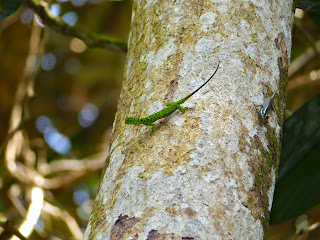
Falling leaf mimic - Bornean gliding lizard, Draco cornutus Quicklinks: Danielle Klomp's paper in Biology Letters Danielle Klomp's blog Tornadic Storm Avoidance Behavior in Breeding Songbirds - Current Biology Innes Cuthill's Camo Lab | |||
| 16 Sep 2015 | Aug 2015: ZSL Scientist Patricia Brekke, polar bear welfare at Yorkshire Wildlife Park, and self-medicating ants | ||
This month I hear how a wildlife park in Yorkshire is providing the perfect retirement setting for an old polar bear. I discover that social insects make trips to natures pharmacy to fight infections. And in the scientific spark, I talk to Patricia Brekke from the Zoological Society of London, who tells me about her research on the endangered new Zealand bird the Hihi, and what inspired her to become a scientist.
Download the MP3
Victor is Yorkshire Wildlife Park's polar bear.
He is one of the biggest polar bears in Europe, weighing 500Kg
Quicklinks: Yorkshire Wildlife Park's Project Polar Bear Ants medicate to fight disease in the journal Evolution Patricia Brekke from The Institute of Zoology at the Zoological Society of London | |||
| 20 Jan 2014 | Jan 2014: Lesley Morrell, prairie dogs, and stinky parrots | ||
This month, I speak to Milla Mihailova from Deakin University in Australia, who tells me about parrots with a particularly pungent stench. I get up close and personal with some black tailed prairie dogs, to find out why they can’t help following the leader. And, in the Scientific Spark I ask Lesley Morrell (@biosciencemum), from the University of Hull what made her want to be a biologist, and how she came to work on why animals live in groups, rather than enjoying the single life. Download the MP3
A black-tailed prairie dog jump-yipping. Credit: Darlene Stack
Quicklinks: Milla Mihailova's webpage Prairie dog paper Jim Hare's personal webpage Lesley Morrell's University webpage | |||
| 08 Jul 2014 | June 2014: Robert Hinde, and an antipredator defence special | ||
Professor Robert Hinde, the Emeritus Royal Society Research Professor of Zoology at the University of Cambridge is this month's Scientific Spark. Robert talks about the early days of ornithology research just after the war, and his memories of David Lack and Niko Tinbergen.
The rest of the episode is an anti-predator defence special! I talk to Jolyon Troscianko from project nightjar about his research on the camouflage of eggs and chicks of African birds. I also find out about an animal that dupes it’s predators by looking like an evolutionary ghost. Download the MP3
A Mozambique nightjar from one of @projectnightjar nests in Zambia.
Quicklinks: Project nightjar's twitter page Project nightjar's webpage Christopher Akcali and David Pfennig's paper on snake mimicry Professor Robert Hinde | |||
| 14 Aug 2013 | Aug 2013: Louise Barrett, peacock eye tracking, and caterpillar eyespots | ||
In the first episode I dig into peahen perception to find out what they look for in their ideal mate. I'll also present the first of a series of interviews from the Behaviour 2013 conference. I speak to Tom Hossie from Carleton University, Canada. Plus in the Scientific Spark I ask Louise Barrett, from the University of Lethbridge in Canada, what sparked her scientific career. Peahen wearing eye-tracking equipment in Yorzinski et al's study. Quicklinks:
| |||
| 05 Dec 2013 | Dec 2013: Steve Jones, slime mold, and spiders that mimic ants | ||
This
month, we leave backbones behind, for an invertebrate and protist special. I speak
to Chris Reid from the the New Jersey Institute of Technology in Newark, USA, about an ancient
single cell animal that looks like a glob of luminous yellow gunge, that doesn't
have a brain but may be smarter than human beings. I find out about a double
deception in the animal kingdom: how an ant-mimicking spider sends misleading
visual and chemical cues to different predators. And, in the scientific spark I
ask Steve Jones, Emeritus Professor
of genetics at University College London what made him want to be a scientist, and how he came to be
one of the world’s experts on snail genetics
Download the MP3
An ant-mimicking spider Peckhamia image courtesy of Continis
Quicklinks: Chris Reid's webpage Divya Uma's paper on ant-mimicry Steve Jones' column in the Telegraph | |||
| 10 Sep 2014 | Aug 2014: Marlene Zuk, hummingbird taste perception, and magpie thieves | ||
In this 1st birthday episode, I find out about some more avian criminals of the animal kingdom. I learn that most birds can’t taste sugar, but hummingbirds can, and I learn how. And in the Scientific Spark, I talk to Marlene Zuk, Professor of behavioural and evolutionary biology at the University of Minnesota. Together with Bill Hamilton, Marlene proposed the good genes hypothesis of sexual selection
Download the MP3 Quicklinks: Maude Baldwin's Science paper on Hummingbird sweet taste page Prof. Marlene Zuk's webpage Dr Toni Shephard's paper on magpies Crab Exeter on twitter | |||
| 18 Nov 2014 | Oct 2014: Ben Sheldon, rock goby camouflage, and lizard imitation | ||
Professor Ben Sheldon, who is the Luc Hoffman Chair of field ornithology and director of the Edward Grey Institute of field ornithology at the University of Oxford tells me what sparked his interest in birds and gives advice to young scientists. Alice Lown tells me about an unassuming little fish commonly found in rock pools around Britain, that is a master of camouflage. I discover that imitation isn’t just the highest form of flattery, but is also an indicator of an animal’s learning prowess. Three individuals are shown on the left having been placed on a black background, and then the same individuals are shown on the right after being on a white background. Quicklinks: Alice Lown's research page Alice Lown's paper Anna Wilkinson's paper Ben Sheldon's research page | |||
| 04 Nov 2013 | Nov 2013: Nicky Clayton and clever crows, and mice that eat scorpions | ||
Nicky Clayton joins me in this month's Beepcast, telling me what sparked her interest in bird intelligence, and how she mixes science with the art of dance. I learn about a mouse with an unusual superpower: immunity to the sting of a scorpion. I also interview Culum Brown of Macquarie University, Australia, who studies how young rainbow fish sniff out lurking predators. Download the MP3
A southern grasshopper
mouse eats the Arizona bark scorpion that it has just killed. Credit: Ashlee and Matthew Rowe
Quicklinks: Culum Brown's webpage Ashlee Rowe's webpage Nicky Clayton's webpage | |||
| 22 Dec 2014 | Nov 2014: The Wiltschkos and magnetic navigation in birds | ||
A sensory ecology bonanza! Professor Wolfgang and Roswita Wiltschko, the husband and wife team who were the first to show that birds have a magnetic sense and use the earth’s magnetic field to orientate, talk about their Scientific Spark. Tanya Kleinhappel tells me how fish sniff out friends from foe. I discover how bats jam their competitor’s sonar.
Download the MP3
Bats jam each others echolocation calls when competing for prey
Quicklinks: Tanja Kleinhappel's paper on Diet-mediated social networks in shoaling fish Corcoran's and Conner's Science paper - Bats jamming bats: Food competition through sonar interference Wolfgang and Roswitha Wiltschko's research page | |||
| 04 Jun 2015 | May 2015: Marie Herbenstein, deception and disguise of orchid mantis and owl butterflies with @jamohanlon @JohannaMappes and @SebaDeBona | ||
This month I’m joined by special guest James O’Hanlon from the Australian museum in Sydney for a deception and disguise special. James tells me about his PhD research on mantids that trick bees by mimicking flowers - or do they?! And we discuss a new paper showing that butterfly eyepsots might really be mimicking the eyes of a predator’s own predator. In the Scientific spark I talk to Marie Herbenstein, from Macquarie University in Sydney, who tells me that things might have not gone the way they have if she’d chosen a different research project!
Download the MP3
The owl butterfly Photo Credit: 1funny.com
Quicklinks: James O'Hanlon's webpage Predator mimicry, not conspicuousness, explains the efficacy of butterfly eyespots Marie Herbenstein's webpage | |||
| 03 Jun 2014 | May 2014: Neil Metcalfe, ZSL's hihi, and cuckoo - hawk mimicry | ||
This month, the masters of disguise: I find out about an animal
that can mimic two different species, for two entirely different reasons. I learn
about a colourful bird from New Zealand called the Hihi, who’s very good at eating its requisite
7 portions of fruit and veg a day. And in the Scientific Spark, I hear from
Neil Metcalfe, Professor of Behavioural Ecology at the University of Glasgow, about
what made him interested in research and how he came to study for a PhD on
seabird ecology.
Download the MP3
Male Hihi. Image courtesy of Matt Gribble ZSL
http://www.zsl.org/conservation/regions/oceania/hihi-conservation-in-new-zealand
Quicklinks: Thanh Lan's paper on cuckoo-hawk mimicry Hihi conservation webpage Neil Metacalfe's webpage | |||
| 31 Mar 2015 | Feb 2015: Damien Farine, penguins who can't taste, and shiny tree swallows | ||
This month, I find out that penguins can’t tell the difference between savoury and sweet. I also chat with Sonia Van Wijk from The Université de Sherbrooke in Quebec, Canada, about what makes a male tree swallow attractive to a female who's on the look-out for more than one partner. And in the Scientific spark, I talk to social network whizz Damien Farine, from the University of Oxford, about his path into science.
Download the MP3
Adelie penguins from http://animalsadda.com/adelie-penguin/
Quicklinks: Sonia Van Wijk's Research Gate page The penguin taste loss paper in Current Biology Damien Farine's webpage | |||
| 04 Oct 2013 | Oct 2013: Tim Birkhead, barn swallows, and coal tits who hide seeds | ||
In October's BEEPcast Tim Birkhead tells me what ignited his interest in ornithology and sexual selection. I explore why male barn swallows don't act their age when courting females. In the third of my interviews from the Behavior 2013 conference, I speak to Tom Smulders of Newcastle University who explains what Coal tits do with unpalatable seeds.
Download the MP3 Quicklinks: Tom Smulder's webpage Masaru Hasegawa's paper Tim Birkhead's webpage | |||
| 01 May 2014 | April 2014: David Sherry and marsh tits, zebra stripes, and Arabian babblers | ||
David Sherry from the Western University in Canada tells me what inspired him to study the hoarding behavior of birds, in the Scientific Spark. Oded Keynan explains the benefits to having offspring stick around for an extended period of time. I also find out why zebras have stripes, and why Rudyard Kipling was wrong!
Download the MP3
Zebras and their stripes
from https://www.flickr.com/photos/mobilevirgin/
Oded Keynan's webpage Tim Caro's webpage Tim's zebra paper in Nature communications David Sherry's webpage | |||
| 10 Aug 2015 | June 2015: Lucy Nash from OUP, Dottybacks change colour to hide from prey, and moths that slow their brains down | ||
In this episode I discover that some species of coral reef fish change colour, and they do this to grab a sneaky meal! I also find out how moths find flowers in the dark. And in the scientific spark I talk
to Lucy Nash, who is commissioning editor for science at Oxford University
Press.
Download the MP3
Copyright © N Justin Marshall/Courtesy of University of Basel
Quicklinks: Will Feeney's webpage Fabio Cortesi's webpage The dottyback paper in Current Biology Hovering hawkmoth paper in science | |||
| 10 Sep 2015 | July 2015: Johan Nilson, sea ducks, and horse facial expressions | ||
This month I find out about sea ducks who enjoy a rather sophisticated fast food diet of mussels. I discover that horses horse around with lots of different facial expressions. And in the scientific spark, I talk to Johan Nilsson from the university of Lund, who researches the physiology and evolutionary ecology of birds.
Download the MP3
What does this face say?!
EquiFACS: The Equine Facial Action Coding System Elisabeth Varennes' research gate page Johan Nilsson's research page | |||

